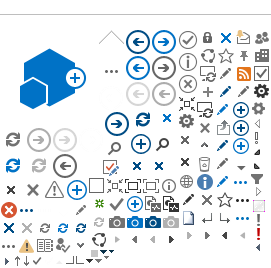MyTitle: Soil and tree stem xylem water isotope data from two pan-European sampling campaigns
MyLinkAnsehenUrl: https://essd.copernicus.org/articles/17/6129/2025/, Take a look
MyLinkPDFUrl:
MyTitelMehrzeilig:
MyTextfeld:
MyAutoren: Marco M. Lehmann, Josie Geris, Ilja van Meerveld, Daniele Penna, Youri Rothfuss, Matteo Verdone, Pertti Ala-Aho, Matyas Arvai, Alise Babre, Philippe Balandier, Fabian Bernhard, Lukrecija Butorac, Simon D. Carrière, Natalie C. Ceperley, Zuosinan Chen, Alicia Correa, Haoyu Diao, David Dubbert, Maren Dubbert et al (2025)
MyMeldungsdatum:
MyLabels:
Struktureinheiten:Label:
NewWindow:
Soil and tree stem xylem water isotope data from two pan-European sampling campaigns
Marco M. Lehmann, Josie Geris, Ilja van Meerveld, Daniele Penna, Youri Rothfuss, Matteo Verdone, Pertti Ala-Aho, Matyas Arvai, Alise Babre, Philippe Balandier, Fabian Bernhard, Lukrecija Butorac, Simon D. Carrière, Natalie C. Ceperley, Zuosinan Chen, Alicia Correa, Haoyu Diao, David Dubbert, Maren Dubbert et al (2025)
MyTitle: Drought intensity and duration interact to magnify losses in primary productivity
MyLinkAnsehenUrl:
MyLinkPDFUrl: https://www.zalf.de/de/aktuelles/Dokumente%20PublikationenProjekte/PB1/science_ads8144.pdf, PDF take a look / download
MyTitelMehrzeilig:
MyTextfeld:
MyAutoren: Timothy Ohlert, Melinda D. Smith et al (2025)
MyMeldungsdatum:
MyLabels:
Struktureinheiten:Label:
NewWindow:
Drought intensity and duration interact to magnify losses in primary productivity
Timothy Ohlert, Melinda D. Smith et al (2025)
MyTitle: Amorphous silica reduces N2O emissions from arable land at the field plot scale
MyLinkAnsehenUrl: https://doi.org/10.3389/fenvs.2025.1522700, Resolve DOI name
MyLinkPDFUrl:
MyTitelMehrzeilig:
MyTextfeld:
MyAutoren: Hoffmann, M., Monzón Diaz, O., Zentgraf, I., Al Hamwi, M. W., Dubbert, M., Stein, M., Holz, M., Schaller, J. (2025)
MyMeldungsdatum:
MyLabels:
Struktureinheiten:Label:
NewWindow:
Amorphous silica reduces N2O emissions from arable land at the field plot scale
Hoffmann, M., Monzón Diaz, O., Zentgraf, I., Al Hamwi, M. W., Dubbert, M., Stein, M., Holz, M., Schaller, J. (2025)
MyTitle: Impact of erosion-induced topsoil dilution on rapeseed root growth, assimilate C input, and turnover in the soil
MyLinkAnsehenUrl:
MyLinkPDFUrl: http://dx.doi.org/10.1007/s42729-025-02405-z, Resolve DOI name
MyTitelMehrzeilig:
MyTextfeld:
MyAutoren: Pehlivan, A., Ruggaber, J., Remus, R., Augustin, J., Kolb, S. (2025)
MyMeldungsdatum:
MyLabels:
Struktureinheiten:Label:
NewWindow:
Impact of erosion-induced topsoil dilution on rapeseed root growth, assimilate C input, and turnover in the soil
Pehlivan, A., Ruggaber, J., Remus, R., Augustin, J., Kolb, S. (2025)
MyTitle: How to get to the N - a call for interdisciplinary research on organic N utilization pathways by plants
MyLinkAnsehenUrl: https://doi.org/10.1007/s11104-024-06839-9, Take a look
MyLinkPDFUrl: https://publications.zalf.de/publications/A310F6BD-7165-421D-9A61-CA7327F9D7FE-1.pdf, PDF take a look / download
MyTitelMehrzeilig:
MyTextfeld:
MyAutoren: Holz, M., Lewin, S., Kolb, S., Becker, J. N., Bergmann, J. (2024)
MyMeldungsdatum:
MyLabels:
Struktureinheiten:Label:
NewWindow:
How to get to the N - a call for interdisciplinary research on organic N utilization pathways by plants
Holz, M., Lewin, S., Kolb, S., Becker, J. N., Bergmann, J. (2024)
